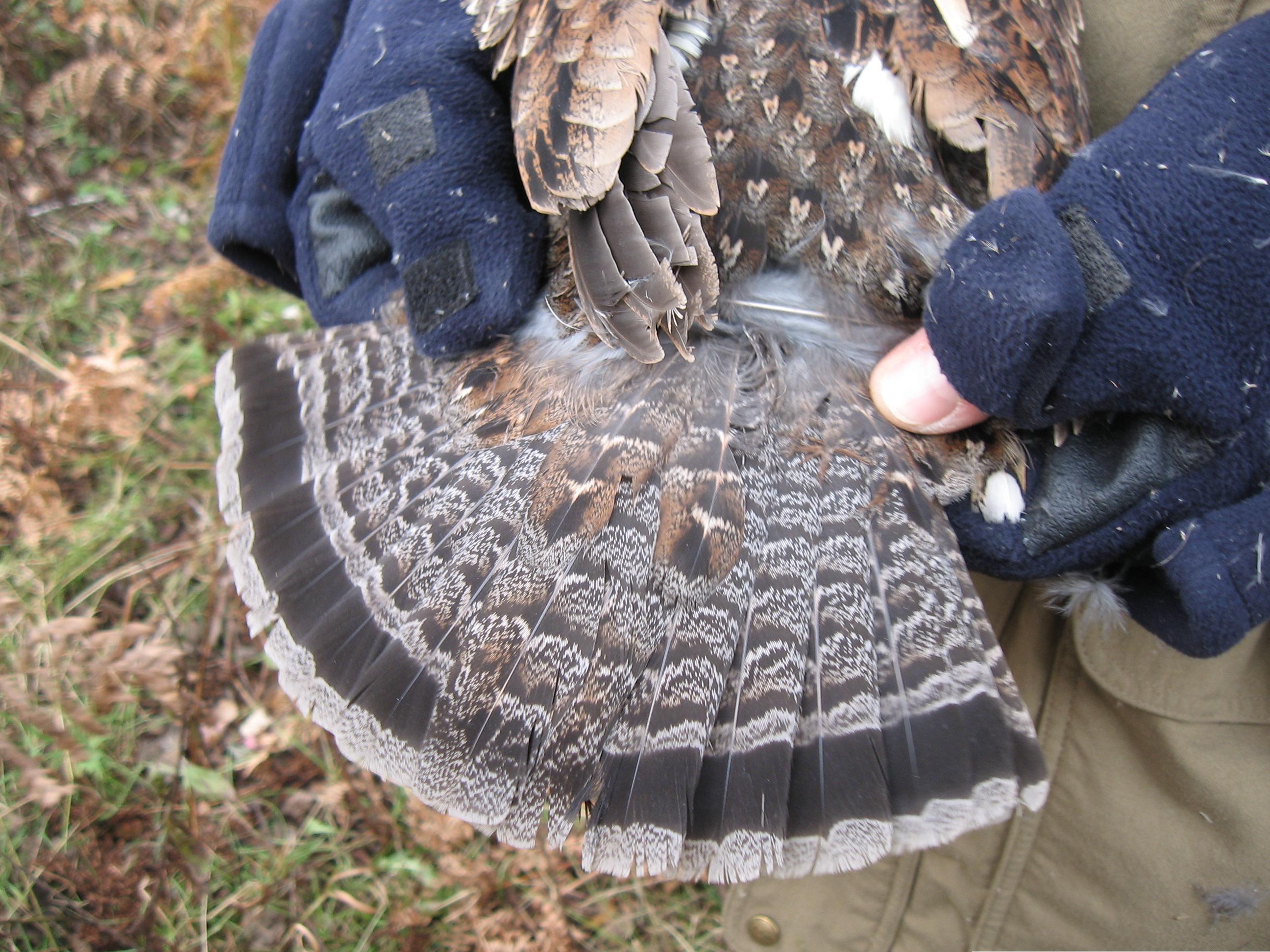
Some Friendly Advice
My thoughts are given below, in list form, illustrating the most common reasons why our hunts are unsuccessful. Names have been omitted, and remember that this post is written only as a helpful reminder …
The Top 5 Reasons Upland Birds Escape Our Grasp
1. You're Not Watching the Dog
There is probably no other form of upland bird hunting that relies on the olfactory abilities of a dog more than grouse and woodcock hunting. They are the stars of the show, and without them, our day in the woods is inevitably an exercise in futility. Keeping at least one of your eyes on a hard working canine is important to harvesting a bird, as an experienced grouse hunting dog will give some signs that he's on game and these clues can help us get ready for the expected flush. When the dog looks like he's on to something, follow him - he knows what he's doing!
Of course, this is where the advice of a guide ("I think he's getting birdy …") comes in handy, which in turn leads to #2 on our list …
2. You're Not Carrying Your Shotgun in a "Ready" Position
I can tell after ten minutes in the woods if we stand a chance of harvesting a grouse when observing the carry of a hunter's firearm. If the gun is not at port arms when grouse hunting (held upright, two hands, across one's body), and instead is carried one handed, either down or slung over a shoulder, there is a high likelihood that we will not be successful that day in taking a grouse. Grouse are wild birds - they usually do not sit tight for points, and they often flush wildly when we get close to them. The average hunter thinks that he can snap off a shot from one of those lazy gun positions when a grouse wildly flushes - it's simply impossible for it to be done, and I have seen many a grouse fly away unscathed when a shot could have been taken from a ready position. Remember that your first chance on a grouse is your best chance, and you might not get another one all day!
This advice does not necessarily apply to hunting woodcock, which are much more likely to sit tight for a point - they are the "gentleman's bird", unlike the wary grouse. Still, it's a good habit to carry one's shotgun the right way.
3. You're Not Physically Ready for a Day in the Uplands
It's a grind out there, believe me, and it helps for your body to be ready to enjoy successive days in the grouse woods. We do a lot of walking, and if you're trying to find those out of the way places for more hospitable grouse, you're going to be walking even more. A couple of months before the season, start doing some form of cardiovascular exercise to get yourself ready. While any form of exertion will help you, hiking is the best thing you can do to get ready to go over hill and dale in search of woodcock and grouse. As a guide, I love being able to pursue birds where I think we may see more of them - we will be greatly limited if we have to walk logging roads all day because the grouse woods are too tough!
4. You Don't Navigate the Woods Properly
Yes, it can be awfully thick out in the grouse woods, and just getting around is an art in itself, but there are ways that we can make it easier on ourselves and hopefully have a more successful hunt. If there's a lane or path through the cover, take it - it's a long day out there, so we might as well take the easiest path possible through the woods, not only to lessen our fatigue, but also to keep us in a shooting position should we have a wild flush. If you're constantly walking behind trees all day, you'll have no shot at an escaping grouse. At those times when we have a dog on point, try to get to the dog in as short a time as possible, and put yourself in a good position where your visibility will be best. In other words, don't stop in a part of the woods where you can't mount and swing your shotgun - it will be another grouse that has escaped your efforts.
5. You Haven't Shot Any Clays Prior to the Season
Practice makes perfect, and while nothing can properly get you ready to take shots at grouse and woodcock, shooting some clay pigeons can help. Practice shots from all angles, high and low, in order to simulate the variety of wing shots that grouse give us. If possible, shoot "low gun" in order to practice your gun mount - at a minimum, it will help you get your shotgun up in a timely manner, which can be the difference in a successful or frustrating day in the uplands. This one is my biggest bugaboo, and my most common excuse for missing birds and earning the neverending ire of my bird dogs and hunting partners!
There are other reasons that I haven't mentioned (improper footwear or gear, lack of observational skills while in the woods, making too much noise, etc.) out of fear of coming off as just another grouse hunting curmudgeon. Oh well …
